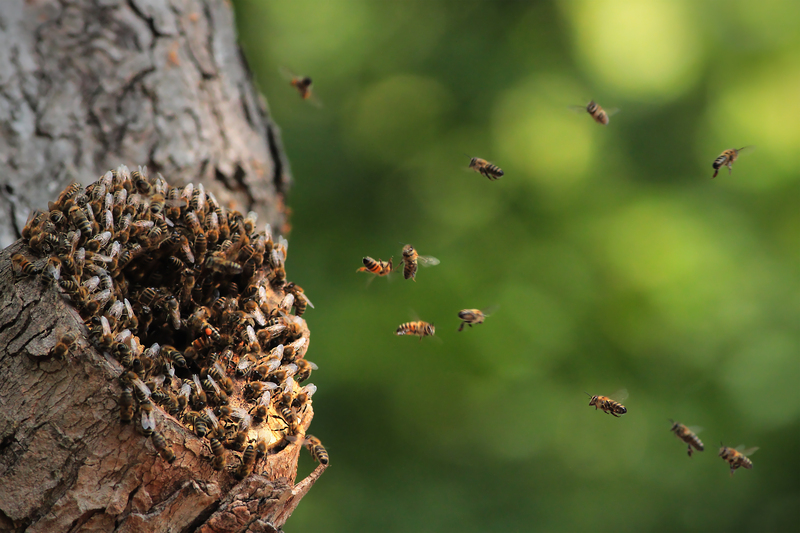Engage the Little Ones with a Creative Garden Design
Posted on 14/06/2025
Engage the Little Ones with a Creative Garden Design
Unlock your child's imagination and curiosity with a playful, creative garden design tailored for kids. Whether you have a sprawling backyard or a compact balcony, transforming any outdoor space into a fascinating learning environment offers endless joy, growth, and lifelong memories. Here, you'll find practical advice, inspirational ideas, and expert tips on getting your kids involved in gardening and creating an environment where both plants and little minds thrive.
Why Consider a Kid-Friendly Creative Garden Design?
In today's digital era, encouraging children to connect with nature is more important than ever. A well-designed children's garden does more than cultivate plants - it nurtures creativity, responsibility, and a love for the environment. With kid-focused layout and engaging features, you can foster curiosity, help children develop fine motor skills, and strengthen family bonds through teamwork and shared discovery.
- Enhances Sensory Development: Children experience colors, scents, textures, and sounds first-hand.
- Encourages Physical Activity: Digging, planting, and watering promote movement and coordination.
- Boosts Confidence: Little ones gain a sense of pride tending their own plants.
- Teaches Responsibility: Looking after the garden helps develop a sense of ownership and discipline.

Planning Your Creative Garden with Kids
Engaging the little ones with creative garden design starts long before anyone picks up a trowel. Involve children at every stage of planning--their enthusiasm and ideas can inspire a landscape that truly reflects their interests. From choosing vibrant flowers to designing quirky features, this is the perfect time to let their imaginations run wild!
Key Elements in a Child-Centered Garden Design
- Safety First: Ensure the garden is free from toxic plants and sharp tools are out of reach.
- Accessibility: Paths, raised beds, and seating should suit little legs and hands.
- Variety: Mix flowers, vegetables, ornamental shrubs, and sensory plants to maintain interest.
- Space to Explore: Allow open areas for play, secret corners, or even a mini-maze!
Creative Garden Zones for Children
A truly engaging kids' garden features a blend of growing spaces and playful zones, offering both learning and excitement.
1. Mini Vegetable Patch
- Why: Easy-to-grow veggies like radishes, carrots, and lettuce provide quick results, keeping children motivated.
- How: Designate a raised bed or a few large containers. Let children select seeds and plant in fun patterns (try a rainbow or smiley face design!).
2. Sensory Pathways
- What: Paths lined with herbs (like lavender and mint), textured stones, and wind chimes engage all the senses as kids explore.
- Tip: Add stepping stones personalized with handprints or painted designs for a special touch.
3. Fairy or Dinosaur Gardens
- Imagination Unleashed: Child-sized areas featuring miniature houses, figurines, or themed plantings spark creative play.
- Get Crafty: Use pebbles, twigs, and shells to build miniature landscapes together.
4. Edible Borders and Snack Trails
- Tasty Fun: Line pathways with strawberries, cherry tomatoes, or snap peas for healthy snacking.
- Bonus: Kids will love harvesting and eating produce fresh from their own garden beds.
5. Wildlife Havens
- Nature in Action: Include birdhouses, butterfly-attracting blooms, and bug hotels to bring wildlife up-close for observation.
- Learning Opportunity: Keep a garden journal to record animal sightings and seasonal changes.
Creative Garden Design Activities for Little Ones
Aside from planning and planting, engage the little ones with creative garden activities that spark joy and learning.
- DIY Garden Markers: Craft plant labels together using painted rocks or recycled materials.
- Watering Routines: Assign watering duties--make it a game with colorful watering cans.
- Seed Starting Experiments: Compare germination rates of different seeds on kitchen windowsills.
- Garden Art: Paint pots, create clay creatures, or string up bunting for personalized flair.
- Story Time Outside: Read garden-themed books amid the plants, or invent tales based on what's growing in your plot.
Choosing the Best Plants for a Creative Children's Garden
Selecting the right plants is crucial for creating a vibrant, child-friendly space. Focus on varieties that are:
- Fast-Growing: Sunflowers, beans, and nasturtiums provide rapid rewards.
- Colorful and Textural: Zinnias, marigolds, lamb's ear, and ornamental grasses add visual and tactile interest.
- Edible: Blueberries, peas, mint, and lettuce are fun and safe for sampling.
- Fragrant: Plant lavender, sweet peas, and scented geraniums to inspire curiosity and create soothing experiences.
Avoid These Plants in a Children's Garden
- Any plant known to be toxic if touched or eaten (e.g., foxglove, oleander, nightshade)
- Plants with thorns or spines that might injure curious hands
- Irritants like poison ivy or stinging nettles
Teaching Kids Through Garden Design
Engaging with a creative garden design offers countless educational moments. From science and math to art and sustainability, outdoor spaces provide a living classroom. Here's how to make the most of your time together:
- Growth Journals: Encourage children to record plant growth, weather changes, and garden "firsts."
- Hands-On Science: Discuss lifecycles, insects, and pollination as you tend the beds together.
- Math Skills: Count seeds, measure plant height, and track yields as practical math activities.
- Mindfulness and Observation: Teach kids to notice subtle changes and appreciate the peacefulness of the garden environment.
Garden Design Ideas for Small Spaces
Even if space is limited, engaging the little ones with inventive garden design is completely achievable.
- Vertical Gardens: Use trellises, wall planters, or hanging baskets to maximize growth area.
- Container Gardening: Let each child choose a pot, decorate it, and select what to grow.
- Windowsill Farms: Herbs like basil, chives, and parsley make easy, productive mini gardens indoors or outdoors.
Balcony and Patio Creations
- Create a dinosaur garden in a large trough or craft a fairy village in window boxes.
- Use colorful pots for mobility and visual impact, letting kids rearrange them for fun.
Making Garden Time a Family Ritual
Successful creative garden design for kids isn't just about what you grow--it's about the experiences you cultivate together. Set aside regular times for the family to dig, play, and discover. Celebrate milestones: the first flower, harvest days, even the lessons from plants that didn't thrive.
- Host a Seasonal Garden Party: Invite friends to see what's growing and swap plants or stories.
- Build Self-Watering Systems: Teach engineering skills with bottle drip setups for holidays.
- Harvest Feasts: Turn produce into pizzas, salads, or smoothies for celebratory meals.
Creative Garden Design Maintenance Tips Involving Kids
- Set Up Routines: Assign age-appropriate tasks like feeding birds, pulling weeds, or topping up mulch.
- Celebrate Progress: Take pictures regularly and create a scrapbook or growth wall chart.
- Reward Responsibility: Offer small incentives for consistent care to motivate ongoing interest.

Frequently Asked Questions on Engaging Children with Garden Design
How old should my child be to start gardening?
Children as young as two or three can begin helping with simple garden tasks under supervision. As they grow, responsibility and complexity can increase gradually.
What if we don't have an outdoor space?
Indoor gardening is a wonderful alternative. Windowsills and balconies work well for starting seeds, growing herbs, or designing miniature themed gardens.
Can gardening help picky eaters?
Absolutely. Research shows kids are more likely to try--and enjoy--fruits and vegetables they've grown themselves.
How do I keep my child interested long-term?
Continue refreshing activities as the seasons change, let them choose plants and projects, and highlight the garden's role in family celebrations or meals.
Conclusion: Cultivating Young Minds with Creative Garden Design
When you engage the little ones with a creative garden design, you're sowing seeds for more than just beautiful blooms or bountiful harvests. You're nurturing curiosity, responsibility, and a love of the earth that can last a lifetime. By involving children in every step--from planning through planting and daily care--you create a haven tailored to their imaginations and passions. Whether your space is vast or compact, let your garden grow alongside your family, full of laughter, learning, and lasting memories.
Ready to transform your outdoor space? Get the kids involved, dig in, and watch as your garden--and your little ones--flourish!

